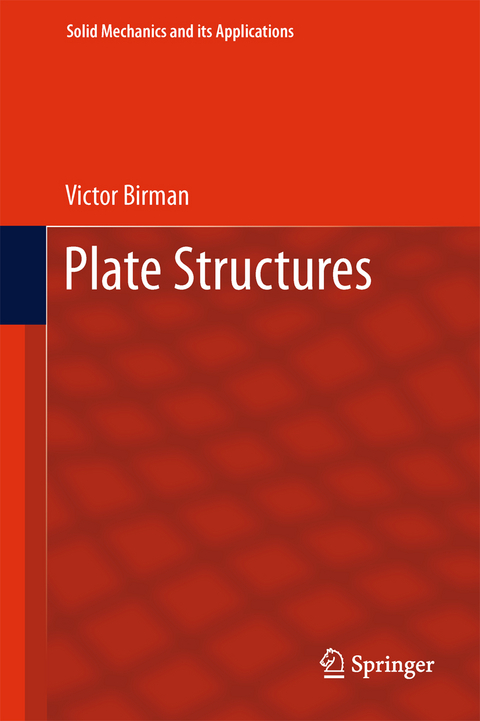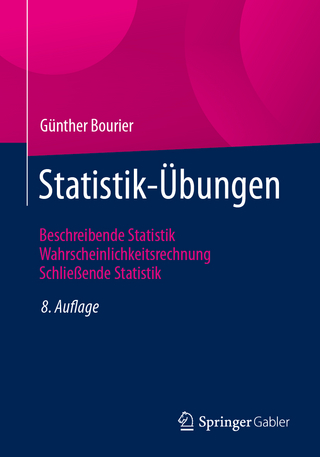
Plate Structures
Springer (Verlag)
978-94-007-3747-1 (ISBN)
Preface.- Chapter 1: Introduction and Basic Concepts.- 1.1. Theoretical foundations of theory of plates.- 1.2 Constitutive relations for composite, isotropic and piezoelectric materials.- 1.3. Strain-displacement relations for plates and relevant kinematic assumptions.- 1.4. Stress resultants and stress couples.- 1.5. Introduction to the Rayleigh-Ritz and Galerkin methods.- 1.6. Equations of motion and boundary conditions: derivation from the Hamilton principle for a geometrically nonlinear shear deformable plate.- 1.7. Equations of motion and boundary conditions: derivation from the analysis of an infinitesimal plate element.- 1.8. An alternative formulation of equations of equilibrium and boundary conditions of thin plates in terms of a stress function.- 1.9. Effect of temperature on constitutive relations and material constants.- 1.10. Strength theories.- 1.11. Outline of a comprehensive plate analysis.- References.- Chapter 2: Static Problems in Isotropic Rectangular Plates.- 2.1. Classical Navier’s problem.- 2.2. Boundary conditions in realistic structures.- 2.3. Representative analytical solution: Levy’s method.- 2.4. Plates on elastic foundation.- 2.5. Combined lateral and in-plane loading.- 2.6. Buckling of rectangular isotropic plates.- 2.7. Application of the Rayleigh-Ritz method and Galerkin procedure to bending and buckling problems.- 2.8. Effect of initial imperfections on bending and buckling of rectangular plates2.- 2.9. Effect of stringers on bending and buckling of plates.- 2.10. Postbuckling response of plates.- 2.11. Design philosophy and recommendations.- References.- Chapter 3: Static Problems in Isotropic Circular Plates and Plates of Other Shapes.- 3.1. Governing equations of circular plates.- 3.2. Axisymmetric bending problems.- 3.3. Geometrically nonlinear axisymmetric bending problem for a solid annular plate.- 3.4. Asymmetric problems for circular plates.- 3.5. In-plane loading and bucklingof circular plates.- 3.6. Bending of plates of non-rectangular and non-circular shapes.- 3.7. Design philosophy and recommendations.- References.- Chapter 4: Dynamic Problems in Isotropic Plates.- 4.1. Typical problems.- 4.2. Free vibrations of rectangular isotropic plates.- 4.3. Forced harmonic vibrations of rectangular isotropic plates.- 4.4. Non-periodic response (representative example of blast loading).- 4.5. Vibrations of reinforced plates.- 4.6. Large-amplitude vibrations.- 4.7. Dynamic instability of plates.- 4.8. Design philosophy and recommendations.- References.- Chapter 5: Mechanics of Composite plates.- 5.1. Basic concepts of thin laminated plates.- 5.2. Governing equations for thin composite plate.- 5.3. Strength criteria for laminated composites.- 5.4. Representative bending problems for a thin composite plate3.- 5.5. Buckling problems for thin composite plates.- 5.6. Statics and dynamics of stringer-reinforced composite plates.- 5.7. Shear-deformable composite plates.- 5.8. Sandwich plates.- 5.9. Design philosophy and recommendations.- References.- Chapter 6: Thermoelastic Problems in Isotropic and Composite Plates.- 6.1. Heat transfer problem.- 6.2. Representative problem: heat transfer in a functionally graded plate subject to a uniform over the surface thermal loading.- 6.3. Thermal bending and buckling of rectangular isotropic plates.- 6.4. Thermal bending and buckling problems for rectangular composite and sandwich plates.- 6.5. Example of thermal problem in applications: composite plates subject to fire.- 6.6. Design philosophy and recommendations.- References.- Chapter 7: Examples of Advanced Applications: Plates with Piezoelectric Sensors and Actuators and Functionally Graded Plates.- 7.1. Governing equations for shear deformable and thin plates with piezoelectric layers.- 7.2. Thin plates with piezoelectric sensors and actuators.- 7.3. Active control of composite plates using piezoelectric “stiffeners-actuators”.- 7. 4. Effect oftemperature on measurements obtained from piezoelectric sensors.- 7.5. Concept of functionally graded material (FGM) plates.- 7.6. Thermal problems of FGM plates.- 7.7. Thermomechanical problems of FGM plates.- 7.8. Design philosophy and recommendations.- References.- Subject index.
| Reihe/Serie | Solid Mechanics and Its Applications ; 178 |
|---|---|
| Zusatzinfo | XIV, 298 p. |
| Verlagsort | Dordrecht |
| Sprache | englisch |
| Maße | 155 x 235 mm |
| Themenwelt | Kunst / Musik / Theater ► Design / Innenarchitektur / Mode |
| Mathematik / Informatik ► Mathematik ► Wahrscheinlichkeit / Kombinatorik | |
| Naturwissenschaften ► Physik / Astronomie ► Mechanik | |
| Technik ► Maschinenbau | |
| ISBN-10 | 94-007-3747-5 / 9400737475 |
| ISBN-13 | 978-94-007-3747-1 / 9789400737471 |
| Zustand | Neuware |
| Haben Sie eine Frage zum Produkt? |
aus dem Bereich


